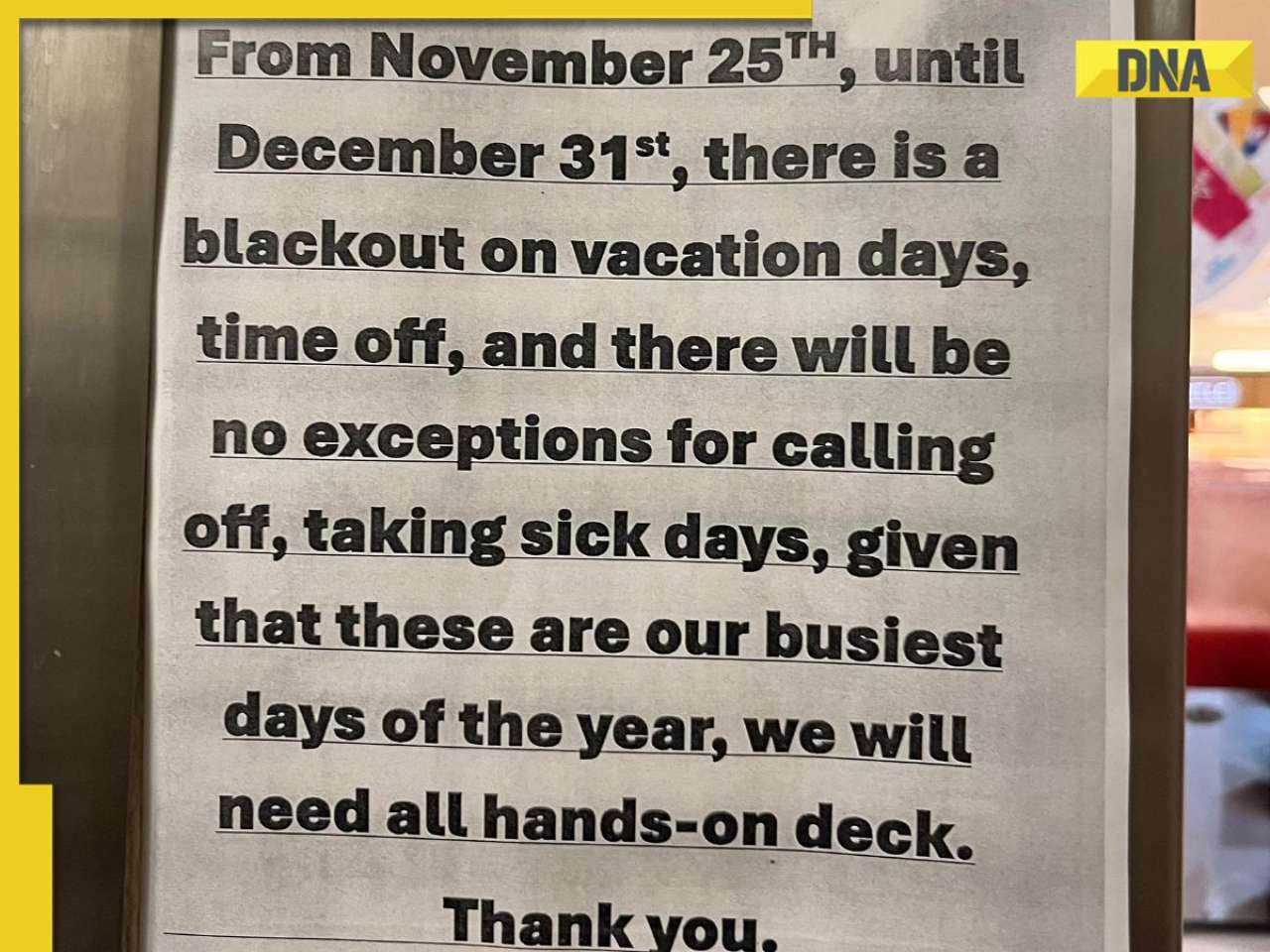- LATEST
- WEBSTORY
- TRENDING
ANALYSIS
Spacewalking: Balancing risks, rewards of working in cosmic vacuum
The process follows strict safety guidelines, involves a lot of protective equipment, and is only done when a space agency decides it's absolutely essential
TRENDING NOW
A spacewalk is a risky activity where astronauts leave the safety of their spacecraft, like a space station or shuttle, to work outside. This task can be quite dangerous, as they are exposed to the harsh conditions of space.
The process follows strict safety guidelines, involves a lot of protective equipment, and is only done when a space agency decides it's absolutely essential.
What is a Space Walk?
During a spacewalk, also known as Extra Vehicular Activity (EVA), an astronaut leaves the safe confines of the International Space Station or a spacecraft to make repairs, like fixing a solar panel, or to conduct scientific experiments in microgravity.
Spacewalks are infrequent, physically challenging, and carry significant risks.
Doing a spacewalk is tough not only because wearing a pressurised suit is physically challenging but also because it requires a lot of mental effort. Astronauts need to concentrate on their tasks and their safety, manage various tools, communicate with their team in the spacecraft and with those on the ground, all while keeping an eye on the time.
Why Do Astronauts Take Spacewalks?
Spacewalking is risky and is only done when a task needs the unique skills and precision of a human, which robots cannot achieve.
Most of the work astronauts do takes place inside the safer setting of their spacecraft. They often use robotic arms, like Canadarm2, to perform tasks outside in the tough conditions of space.
Sometimes, tasks need to be done outside that require human skill and judgement. When the importance of the work is greater than the risks involved, a spacewalk is scheduled.
How Is a Spacewalk Carried Out?
There are various reasons for spacewalks, including installing new equipment, removing broken parts, setting up experiments, or checking for damage. However, the steps involved in performing a spacewalk are the same, no matter what the task is.
At the International Space Station, astronauts must leave the space centre through the pressure-controlled Quest Airlock. Once they're in space, there are systems set up to ensure their safety and the effectiveness of the spacewalk.
● While astronauts are on a spacewalk, the crew inside the station provides support by reminding them of the steps in their procedure and helping with the tools they are using.
● Astronauts have to complete their tasks using only an emergency checklist since there’s no easy way to carry printed instructions with them.
● Astronauts depend on their crew and a ground-based astronaut with spacewalk experience to guide them through the procedures.
● If an astronaut is leading the spacewalk, they must also monitor what the other astronaut is doing outside, along with the timing, safety, and overall completion of the activity.
What Types of Spacesuits Are Needed for Spacewalks?
The EVA spacesuits are essential for keeping astronauts safe while they are on a spacewalk.
● EVA spacesuits are made to shield astronauts from the dangerous conditions of space. The upper part of the spacesuit is hard to protect vital organs from debris and other risks.
● The suits are filled with pure oxygen at one-third the pressure of sea level. They can handle the extreme cold and heat of space and protect astronauts from tiny, fast-moving micrometeoroids that travel at 10 kilometres per second.
● The suit includes a portable life-support system in its backpack. This system has an oxygen-purification unit, a cooling system, a radio, and a lithium-ion battery for power.
● The helmet has cameras that allow mission control to see what the astronauts are doing, along with lights for working in the dark.The helmet also features a gold visor and sun shields to protect the astronaut's face and eyes from the intense, unfiltered sunlight in space.
● On the chest, there is a computer display and control module to manage the suit, along with a purge valve to release pressure if necessary.
A purge valve is a device that allows pressure to be released or vented from a system. In the context of a spacesuit, it helps to safely reduce pressure if it becomes too high, ensuring the astronaut's safety.
● Two sturdy clips on the front of the suit let astronauts attach a metal frame that keeps all their tools in place.
● While on a spacewalk, astronauts stay attached to the space station with at least one tether, which is secured to their suit using locking metal hooks.
● Spacesuits are mainly white to reflect sunlight and heat. Each suit has 14 layers of materials, with each layer having a specific function to help keep astronauts safe. Recently, many improvements have been made by private companies like SpaceX.
What Is the Training Process for a Spacewalk?
Before astronauts go on a spacewalk, they spend years getting ready. This includes learning about their suits, using virtual reality to practise, training in vacuum chambers, and simulating zero gravity underwater.
The most crucial training environment is underwater since it closely resembles the weightlessness experienced during a spacewalk.
● NASA astronauts train at the Neutral Buoyancy Laboratory located at the Johnson Space Center. This facility has a 45-foot-deep pool that features a replica of a section of the International Space Station (ISS) and the Canadarm2, allowing astronauts to practise the movements needed for a spacewalk.
● The main goal of the training is to create, improve, and perfect all aspects of spacewalks (EVAs) while also sharpening the specific skills required for them.
● Astronauts spend hundreds of hours training underwater. During this time, they practise moving and working in their spacesuits, learn to think in three dimensions, and develop new methods for spacewalking.
● In training, astronauts practise how to check their suit's health, adapt to the quick changes between hot sunrises and cold, dark sunsets every 46 minutes, and get ready for the tough physical demands of spacewalking, where the pressurised, stiff suit makes movement challenging.
● You train and prepare so thoroughly that when you do a real spacewalk, the experience feels familiar and manageable, rather than overwhelming.
(The author of this article is a Aerospace & Defence Analyst based in Bengaluru. He is also Director of ADD Engineering Components, India, Pvt. Ltd, a subsidiary of ADD Engineering GmbH, Germany. You can reach him at: girishlinganna@gmail.com)
(Disclaimer: The views expressed above are the author's own and do not reflect those of DNA)







)
)
)
)
)
)
)
)
)
)
)
)
)
)
)
)


























































